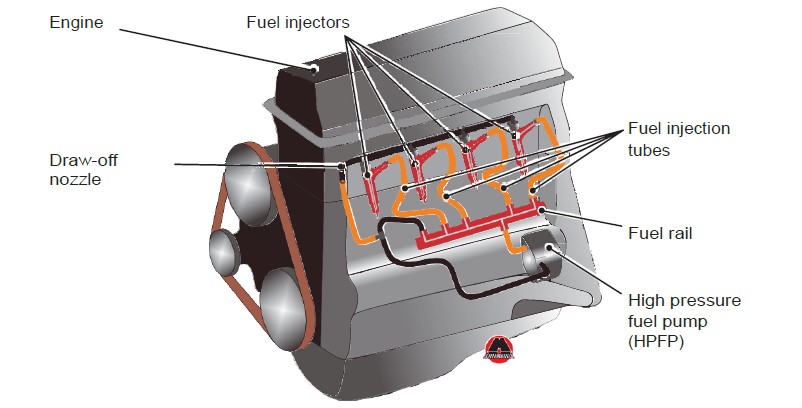4.11.10 The main differences between gasoline and diesel engines
The most important difference between engines that use different types of fuel is that the air-fuel mixture in a gasoline engine is ignited by an electric discharge from a spark plug, and in a diesel engine it ignites spontaneously from highly heated air. The strokes are the same, but the phases are shifted according to the beginning and end of fuel injection.
In modern diesel engines, fuel is injected by a high-pressure nozzle directly into the cylinder. Thorough mixing of the air-fuel mixture is the main condition for normal operation.
So, a few major differences between a diesel engine and a gasoline engine are as follows:
- Ignition of the air-fuel mixture occurs due to the strong heating of the compressed air inside the cylinder.
- The combustion chamber is not located in the cylinder head, but in the piston (an example of how such a piston looks like is provided in the subsection "Piston" of section 4.7 "Engine Block and Crank Gear").
- Two fuel pumps are installed in the fuel supply system: a low pressure fuel pump (LPHP or just a booster pump) and a high pressure fuel pump (HPFP), which creates sufficient pressure in the system for ensuring normal fuel atomization. The high pressure fuel pump is schematically shown in Figure 4.50.
- If a Common-Rail injection system is installed (the system design is shown in Figure 4.50), then the fuel is pumped into a special fuel rail by a high pressure pump (shown in Figure 4.49 and is a tube). Inside the rail, the pressure is maintained at the same level by the regulator (about 2000 bar, or even higher), and from the rail - it is supplied through the high-pressure fuel pipes to the fuel injectors.
 Figure 4.49 Appearance of diesel engine fuel rail with Common-Rail system.
Figure 4.49 Appearance of diesel engine fuel rail with Common-Rail system.
5. A particulate filter is installed in the exhaust system of modern diesel engines.
Note
It is the soot, which is contained in the exhaust gases of diesel engines, that is one of the most dangerous components. And, according to scientists, it can lead to the formation of cancerous tumors.
6. On some diesel engines, a urea supply system (the so-called SCR technology) is installed. It helps reducing emissions of harmful substances (namely, nitrogen oxides) when the engine is running.
 Figure 4.50 Direct injection system of Common-Rail diesel engine.
Figure 4.50 Direct injection system of Common-Rail diesel engine.



















2 MB